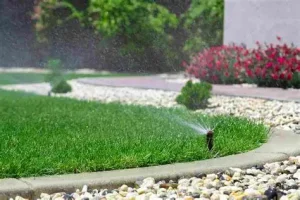Building your dream home is an exciting journey that culminates in a space that is unique to you. But it also involves research, planning, and potential project delays.
Start by setting realistic goals and managing your expectations to stay within budget. Learn about the essential steps to bringing your dream home to life:

Establishing a Budget
Building a home is a unique experience that offers many benefits, but the process can feel daunting for first-time homeowners. It’s important to start the process with a clear vision and realistic goals, which means establishing a budget that accounts for all costs related to the construction of your new home.
Establishing a budget begins with taking an in-depth look at your finances to identify what you can comfortably afford. Then, a detailed breakdown of various essentials can take shape: land prices, labor, design fees, materials, and more.
It’s also crucial to prioritize key design features that can make your home energy efficient and comfortable, as well as consider resale value down the line. Finally, you’ll want to keep track of expenses throughout the construction process, which can help ensure that the build is on track with your expectations and budget.
Designing Your Home
Creating a home design that suits your lifestyle is one of the most important steps in the building process. Whether you work with a designer or have the option to choose your builder, a well-designed home typically leads to higher quality construction and can make the entire process more enjoyable for everyone involved.
You should take into consideration not only your current needs but also any potential changes in the future, such as a growing family or need for a home office. This will help you to narrow down your “must-have” list and avoid adding unnecessary features that may blow your budget.
You should work closely with your designer throughout the planning phase to ensure that your vision is accurately captured in the finished product. The level of involvement you have in this process will depend on your preference, so it is important to discuss this with your designer before starting the project. This will also allow you to set clear expectations about what you expect from the building process. Regular communication can also help prevent unexpected hiccups, as you will be able to address them quickly to keep your project on track.
Getting Pre-Approved for a Construction Loan
The first step is to meet with a mortgage loan officer and determine which type of construction loan works best for your budget. This process includes reviewing your credit, debts, and income to ensure you can afford to repay your loan once construction begins.
Many lenders will also require additional documentation, such as architectural blueprints, a budget, timelines, and a contract with your builder. They may also ask for a down payment, typically at least 20 percent of the projected home’s cost.
When you’re ready to move forward with construction, your lender will conduct a thorough appraisal of the property and compare it against comparable homes in the area to determine its future value. They’ll also review your loan-to-value ratio to make sure you have enough equity to cover construction costs and any mortgage-related expenses after completion.
Choosing the Right Builder
It’s critical to choose the right builder when building your dream home. The right builder will work closely with you to understand your needs and provide guidance throughout the process. They will also help you navigate the financial landscape to ensure that your project stays on track. They’ll safeguard against unforeseen delays and frustrating budget overruns.
When choosing a custom builder, start by creating a list of your dream home features. Think about the non-negotiables, such as an acre of green space or a temperature-controlled wine cellar. Once you have your list, share it with your builder. It will help them guide you through the design and product selection process, ensuring that your new home meets all of your expectations.
When evaluating builders, consider their reputation, experience, and approach. Local home builders’ associations can provide you with lists of reputable builders in your area. Additionally, you can use online resources to verify a builder’s license and insurance. Also, ask potential builders for references and testimonials from previous clients. This can help you assess their reliability and communication skills.
Staying Involved
Choosing the right builder is one of the most important parts of the home-building process. They will be the key to helping you bring your dream home to life. Be sure to interview several builders and read client testimonials before making your final decision. Once you’ve chosen a home builder, stay involved throughout the construction process to make sure everything is going according to plan. This will help prevent unexpected expenses from arising during construction.
As construction comes to a close, you’ll begin to see your vision come to life. Insulation will be installed to create energy efficiency, windows and doors will be installed, and flooring will be laid. This is the time to add your personal touches, like painting and decorating. Once your home is complete, city and/or county inspections will be conducted to ensure that it complies with local codes. You’ll then be able to move into your new home and begin creating memories. Purchasing an existing home can be difficult to navigate, but building your dream house from the ground up can be a rewarding experience.
